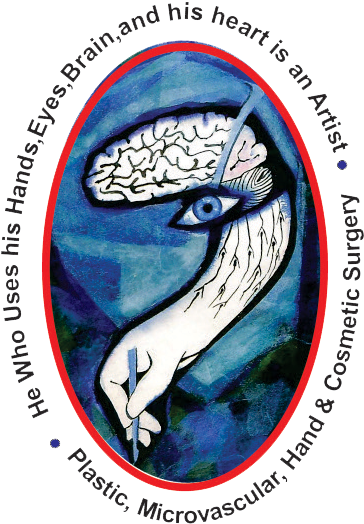Body Contouring
Body contouring is a procedure that alters the shape of the human body by eliminating excess skin and fat cells. Tummy tucking, removal of man breasts, getting rid of love handles and arm lifts are sought-after procedures for body contouring.

Dramatic weight loss has many benefits. But after any substantial amount of weight loss due to weight loss surgery and/or lifestyle changes, the skin and tissues often lack the elasticity to conform to the reduced body size.
Surgical body contouring following major weight loss removes excess sagging skin and fat while improving the shape of the underlying support tissue. The result is a better-proportioned appearance with smoother contours.
Body contouring procedures may include
- Arm lift: correct sagging of the upper arms
- Breast lift: correct sagging, flattened breasts
- Facelift: correct sagging of the mid-face, jowls and neck
- Lower body lifts: correct sagging of the abdomen, buttocks, inner and outer thighs
- Medial thigh lift: correct sagging of the inner thigh
- Tummy tuck: correct apron of excess skin hanging over the abdomen
Questions? We got Answers!
In general, good body contouring candidates are:
- Adults whose weight loss has stabilized
- Healthy individuals without medical conditions that impair healing or increase risk of surgery
- Nonsmokers
- Individuals with a positive outlook and realistic goals
- Individuals that are committed to leading a healthy lifestyle with proper nutrition and fitness
During your body contouring consultation be prepared to discuss:
- Your surgical goals
- Medical conditions, drug allergies and previous medical treatments
- Current medications, vitamins, herbal supplements, alcohol, tobacco and drug use
- Previous surgeries
Your plastic surgeon will:
- Evaluate your general health and any preexisting health conditions or risk factors
- Examine your body and take detailed measurements
- Take photographs for your medical record
- Discuss your options and recommend a course of treatment
- Discuss likely outcomes of body contouring and any risks or potential complications
The success and safety of your procedure depends on your complete candidness during your consultation. Be sure to ask questions. To help, we have prepared a checklist of questions to ask your body contouring surgeon that you can take with you to your consultation.
It’s very important to understand all aspects of your body contouring procedure. It’s natural to feel some anxiety, whether it’s excitement for your anticipated new look or a bit of preoperative stress. Don’t be shy about discussing any concerns with your plastic surgeon.
Use this checklist as a guide during your body contouring consultation:
- Are you certified by the American Board of Plastic Surgery?
- Were you trained specifically in the field of plastic surgery?
- How many years of plastic surgery training have you had?
- Do you have hospital privileges to perform this procedure? If so, at which hospitals?
- Is the office-based surgical facility accredited by a nationally or state-recognized accrediting agency, or is it state-licensed or Medicare-certified?
- Am I a good candidate for this procedure?
- What will be expected of me to get the best results?
- Where and how will you perform my procedure?
- What surgical technique is recommended for me?
- How long of a recovery period can I expect, and what kind of help will I need during my recovery?
- What are the risks and complications associated with my procedure?
- How are complications handled?
- How can I expect to look over time? After pregnancy?
- What are my options if I am dissatisfied with the cosmetic outcome of my procedure?
- Do you have before-and-after photos I can look at for this procedure and what results are reasonable for me?
The decision to have plastic surgery is extremely personal, and you will have to decide if the benefits will achieve your goals and if the risks and potential complications of body contouring surgery are acceptable.
You will be asked to sign consent forms to ensure that you fully understand the procedure and any risks and potential complications.Body contouring risks include:
- Bleeding
- Infection
- Fluid accumulation
- Poor wound healing
- Skin loss
- Blood clots, deep vein thrombosis (DVT) and pulmonary embolism
- Excessive or widened scars
- Numbness or other changes in skin sensation
- Anesthesia risks
- Unfavorable scarring
- Residual skin laxity or contour irregularity
These risks and others will be fully discussed prior to your consent. It is important that you address all your questions directly with your plastic surgeon.
In preparing for body contouring surgery, you may be asked to:
- Get cleared for surgery by your bariatric surgeon and/or primary care doctor
- Get a lab test
- Take certain medications or adjust your current medications
- Stop smoking well in advance of surgery
- Avoid taking aspirin, anti-inflammatory drugs and herbal supplements or other medications that may increase bleeding
During your recovery from body contouring surgery, dressings or bandages will be applied to your incisions following the procedure.
Small, thin tubes may be temporarily placed under the skin to drain any excess blood or fluid that may collect.
You will be given specific instructions that may include:
- How to care for the surgical site(s).
- Medications to apply or take orally to aid healing.
- Specific concerns to look for at the surgical site or in your general health.
- When to follow up with your plastic surgeon.
Be sure to ask your body contouring surgeon specific questions about what you can expect during your individual recovery period:
- Where will I be taken after my surgery is complete?
- What medication will I be given or prescribed after surgery?
- Will I have dressings/bandages after surgery? When will they be removed?
- Are stitched removed? When?
- When can I resume normal activity and exercise?
- When do I return for follow-up care?
Body contouring recovery at home
You may be instructed to avoid bending, straining or lifting for several days to weeks.
Where tightening of the abdomen or thighs is involved, your plastic surgeon may also instruct you to avoid standing fully upright and stressing any internal sutures as they heal, and to sleep with pillows elevating your knees.
To minimize the risk of DVT (blood clots in the legs) you will need to be up and walking as soon as possible, and drinking plenty of fluid.



